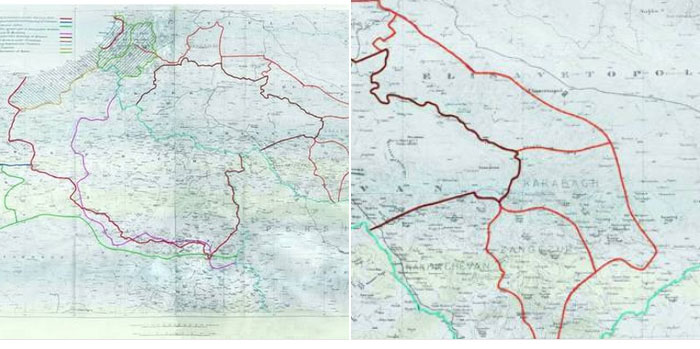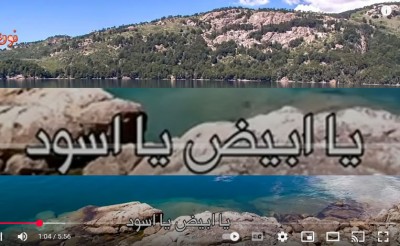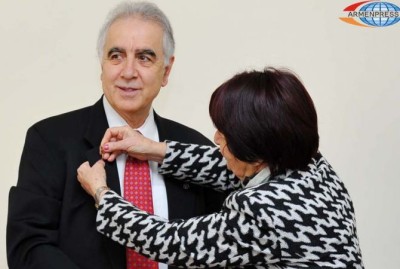
Ara Papyan : The Legal Title over Nagorno-Karabakh
On October 3 2020
Արա Պապյան Writes on Facebook
The Legal Title over Nagorno-Karabakh
Diplomats, politicians, other public figures and experts often refer to the Nagorno-Karabakh as an “Azerbaijani territory”. This is totally false and non-accurate characterization of the legal status of the Nagorno-Karabakh and adjacent territories. The root cause of this delusion and fallacy is the misinterpretation of the legal status of Soviet Republics within the Soviet Union. Soviet Republics never were independent states and never were recognized by the international community as subjects of international law. They were territorial-administrative entities within the Soviet state, like provinces, vilayets or gubernias in many counties.
The affiliation of any territory to an independent state is defined by the legal title, which is established by an INTERNATIONAL LEGAL DOCUMENT. The Azerbaijani Republic never held the title over Nagorno-Karabakh or Karabakh at all. The administrative subordination of Nagorno-Karabakh to Baku was based merely on Russian Bolshevik Party resolution of July 5th 1921 fiercely supported by Joseph Stalin.
The so called Nagorno-Karabakh conflict arose from the time when, in 1918, the Azerbaijani Republic, such an entity being established for the first time in history, claimed the entirety of the Baku and Elizavetpol administrative units – gubernias - of the former Russian Empire without any legal or other basis and without considering the demographics of either of those territories. Тhis approach was unacceptable for the Great Powers at the Paris Peace Conference (1919-1920) – the United States, the British Empire, France, Italy, and Japan, as the creation of new states and their frontiers were not to be based on the administrative divisions of former states, but on the principle of self-determination of peoples as brought forth by US President Woodrow Wilson.
And so, when during the first London conference of the Paris Peace Conference (12 February to 10 April, 1920), the issue of the borders of the Republic of Armenia was once again taken up in detail on the 16th of February,[1]it was decided to create a commission “on the boundaries of a new independent State of Armenia” comprised of one member each of the Great Powers.[2]Accordingly, the commission was established on the 21st of February, 1920, with representatives of the British Empire, France, Italy, and Japan[3], which prepared the “ Report and Proposals of the Commission for the Delimitation of the Boundaries of Armenia”[4]dated the 24th of February, 1920, put on the agenda for discussion on the 27th of February.[5]
The president of that session, the Foreign Secretary of the British Empire, Lord Curzon, in speaking of the territorial issues between the republics of Armenia and Azerbaijan, said that, “the regions of Karabagh, Zangezur and Nakhitchevan were in dispute. The population there was chiefly Armenian, except for a part which was almost wholly Tartar”.[6]It is essential to stress that this part does not refer to Nagorno-Karabakh (Mountainous Karabakh), nor even to that territory created out of a part of it later, known as the Nagorno-Karabakh Autonomous Oblast, but to Karabakh itself, which includes the Karabakh Plains.
This document that expressed the joint view of Britain, France, Italy, and Japan on the borders in the southern Caucasus, called for a period of waiting so that the parties would themselves come to an agreement, only arbitrating on the bondaries in case of a failure of the parties to do so. “As regards the boundary between the State of Armenia and Georgia and Azerbaijan, the Commission considers that, it is advisable for the present to await the results of the agreement, provided for in the treaties existing between the three Republics, in regard to the delimitation of their respective frontiers by the States themselves. In the event of these Republics not arriving at an agreement respecting their frontiers, resort must be had to arbitration by the League of Nations, which would appoint an interallied Commission to settle on the spot the frontiers referred to above, taking into account, in principle, ethnographical data.”
As is clear from the above, the principle of resolving by arbitration the issue of the Armenia-Azerbaijan border was proposed and adopted as early as the 24th of February, 1920, by this joint document of the Great Powers. Moreover and most importantly, the principle of delimitation was made clear: “taking into account, in principle, ethnographical data”. Accordingly, then, the report had a map annexed to it.[7] According to that document, taking the demographic make-up of the South Caucasus of 1920 into account, not only was Nagorno-Karabakh (Mountainous Karabakh) considered part of the Republic of Armenia , but so was also a large part of the Karabakh Plains.
It is also of great importance that this document was included as well in the Full Report of the Arbitral Award of US President Woodrow Wilson of the 22nd of November, 1920, as document No. 2 in Annex I, indicating that the US accepted the arbitration, the arbitral nature and legality of this document. Those clauses were also included in the Treaty of Sèvres (of the 10th of August, 1920), as Article 92: “The frontiers between Armenia and Azerbaijan and Georgia respectively will be determined by direct agreement between the states concerned. In the either case the States concerned have failed to determine the frontier by agreement at the date of the decision referred to in Article 89, the frontier line in question will be determined by the Principal Allied Powers, who will also provide for its being traced on the spot ”.
In sum, one can draw the following conclusion. The proposal to resolve the Nagorno-Karabakh conflict based on League of Nations Council’s “Report and Proposals of the Commission for the Delimitation of the Boundaries of Armenia” dated the 24th of February, is completely adequate and realistic, as it not only expresses the decision already codified by Britain, France, Italy, and Japan, but also, which is more important, it is based on as democratic a principle as “ethnographical data .” It cannot be subordinated to Bolshevik Party resolution. Naturally, a basis for the Karabakh conflict resolution can only be found on the ethnographic data of 1920, because whatever happened since 1920 – the forcible occupation of the independent republics of Azerbaijan and Armenia by the armed forces of a foreign state, the 11th Red Army, followed by their annexation to Soviet Russia in its new veneer of the Soviet Union – was in utter violation of international law, and, as goes the maxim in international law, ex injuria jus non oritur – law does not arise from injustice.
Therefore, Great Britain, France, Italy, and Japan, as well as the United States of America, must not spare any efforts in implementing their very decision as soon as possible.
It should be emphasized at the end that Azerbaijani Republic, with its Constitutional Act of October 18, 1991 (No. 222-XII) "On the restoration of the state independence of the Azerbaijani Republic", completely, unconditionally and finally renounced the entire Soviet political and legal heritage, including the decision of the Caucasus Bureau dated July 5, 1920.
Ara Papian, Yerevan, October 3, 2020.
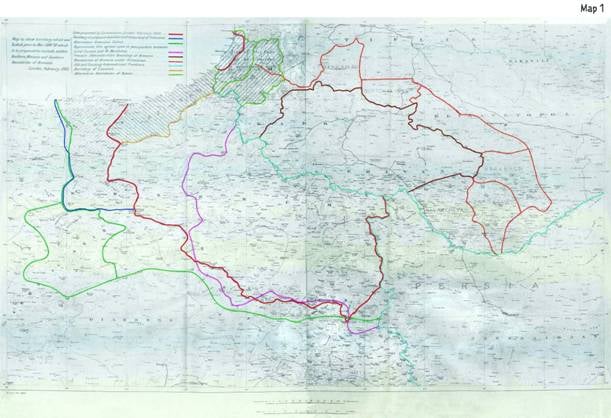
Artsakh
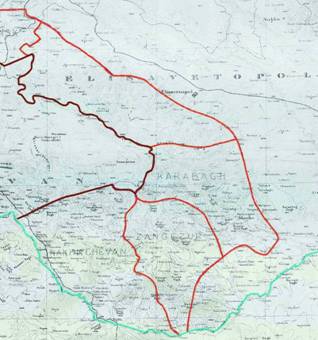
Nagorno-Karapagh, Nagorno Karapagh
[1] Documents on British Foreign Policy 1919-1939, (ed. by R. Butler and J. Bury) First Series, v. VII, London, 1958, pp. 81-86. Document # 10: Consideration of the future boundaries of Armenia: decision to appoint an Allied commission to report thereupon, Feb. 16, 1920. [hereafter, DBFP]
[2] Ibid, p. 86.
[3] Ibid, Document #20: Decisions of parts III and IV of the draft synopsis of the Turkish treaty (political clauses), p. 178.
[4] The entire document is available in Arbitral Award of the President of the United States of America Woodrow Wilson: Full Report of the Committee upon the Arbitration of the Boundary between Turkey and Armenia, Washington, November 22, 1920 , (prepared by Ara Papian). Yerevan, 2011, pp. 98-112.
[5] DBFP, Document # 34, p. 280.
[6] Ibid, p. 281.
[7] The map is kept in the National Archives and Records Administration and is published in Arbitral Award of the President of the United States of America Woodrow Wilson: Full Report of the Committee upon the Arbitration of the Boundary between Turkey and Armenia, Washington , November 22, 1920 , (prepared by Ara Papian). Yerevan , 2011, p. 328.
